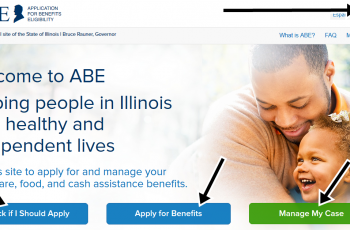It is very important that you know how food stamp benefit program can be of grate help to you and your family before you proceed to apply for food stamps, or SNAP benefits, at your local government benefits office. Food stamp benefits can help thousands of people who are dealing with food insecurity. Households that cannot meet all the needs a family might face during a time of economic difficulty. This article will give you full insight for better understanding of the ways in which food stamps can help keep your family from being hungry during tough or critical times.
What Are Food Stamps?
The Food Stamp Program (Supplemental Nutrition Assistance Program (SNAP), is a federally-funded program that provides monthly benefits to low-income households to help pay for the cost of food.
SNAP is delivered digitally through an Electronic Benefits Transfer card (EBT), that is loaded with a certain amount of money each month. In order to redeem the benefits, recipients scan their EBT card at the cash register to purchase eligible foods with their SNAP benefits.
SEE ALSO: Food Stamps Calculator: How Much Food Stamps Will I Receive?
In order to apply for SNAP assistance, you must meet strict income and other eligibility requirements according to the USDA and also follow all program guidelines to remain in the program.
How Can Food Stamp Help Me and My Family?
Currently, Food stamps are the nation’s largest program in the government’s domestic hunger safety net for low-income individuals and families. According to data published by the USDA, in 2016 SNAP helped an average of 44.2 million people in 21.8 million U.S. households obtain nutritious food.
Furthermore, beneficiaries also gained additional benefits which include:
- Increased Food Purchasing Power of Households: Although SNAP recipients are expected to use some of their own disposable income toward food costs, SNAP reduces the amount that must be dedicated to feeding the family. This leaves more disposable income available for rent, transportation or utility costs.
- Moving out of poverty: When the value of SNAP benefits is counted as income, 10 percent of participant households moved above the federal poverty guidelines in 2016.
- Automatic Benefit Adaptations: During the economic recession, food stamp benefits increase. When the economy improves, SNAP participation declines, shifting the flow of benefits to communities facing rising unemployment. Purchasing foods with SNAP benefits puts dollars back into local economies. Thereby, strengthening the communities where food stamp recipients live and work.
- Free or reduced-price food for kids: Children who live in SNAP households automatically qualify to receive free or low-cost breakfast and lunch on school days. This is offered through the National School Lunch Program and the School Breakfast Program. Kids at schools or daycare centers that do not offer the national breakfast or lunch programs automatically qualify to receive free milk through the Special Milk Program.
ALSO SEE: How to Report Food Stamp Fraud
What You Cannot Buy With Your Food Stamps Benefits
SNAP provides access to a wide variety of foods, including plants and seeds that produce food for the household. Households are not allowed to use their SNAP benefits to purchase the following items:
- Foods that will be eaten in the store
- Hot foods, such as those from a grocer deli
- Pet foods
- Vitamins and medicines
- Beer, wine or liquor
- Soap and shampoo
- Live animals and birds, except for live seafood including fish, lobsters, and shellfish
- Diapers
- Cigarettes or tobacco
- Cleaning supplies and paper products.
SNAP participants are encouraged to use their benefits to purchase healthier foods, such as meat, dairy products. Also, fruits and vegetables, rice, bread, pasta, and cereal. Food stamps can also be used to buy non-alcoholic beverages and snack foods, including chips, cookies and ice cream.
READ ALSO: What Foods You Can Buy With SNAP Benefits?
You can read this article on emergency food stamps to find out how to get food in case of an emergency. If you are hungry now, kindly pick up your phone and call the National Hunger Hotline at 1-866-3-HUNGRY (1-866-348-6479) or 1-877-8-HAMBRE (1-877-842-6273) in Spanish. The hotline is open from Monday through Friday, 7:00 AM to 10:00 PM Eastern Time.

